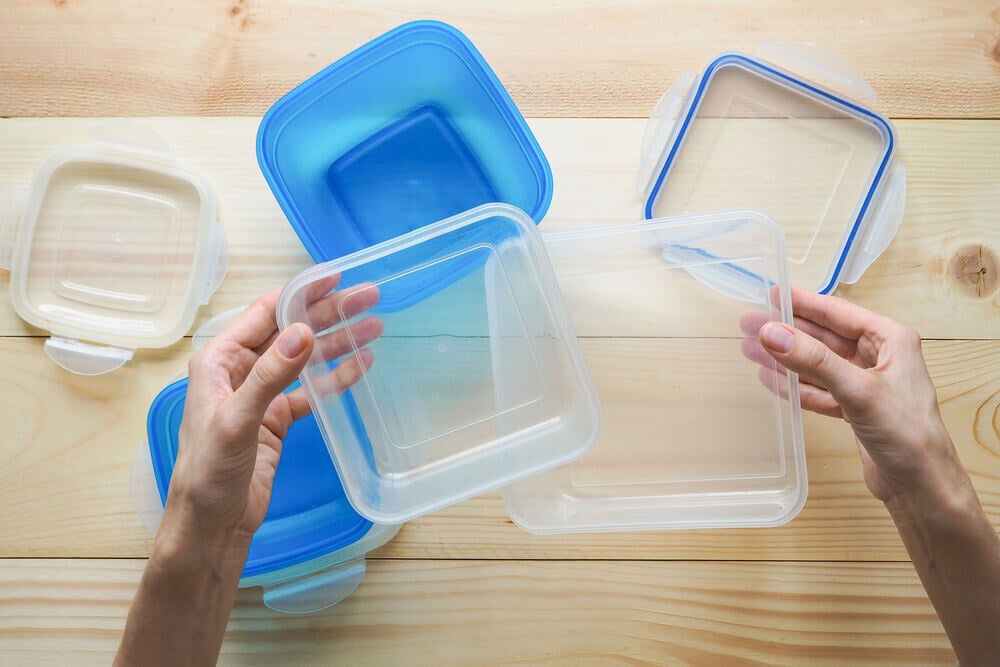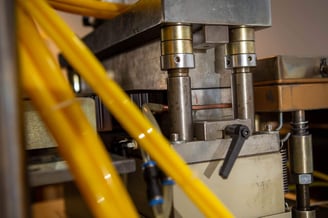What Is Food-Grade Plastic?

Not all plastics are safe for food contact. Food-grade plastics must meet strict safety standards to ensure they don’t contaminate food with harmful chemicals or degrade under storage conditions. Understanding what food-grade plastic is and how it is used can help manufacturers, suppliers, and consumers make informed choices about safe and sustainable food packaging.
What Makes a Plastic Food Grade?
Its physical qualities and chemical composition play major roles in whether a plastic is suitable for food contact. Testing and established regulations ensure that food-grade plastics can provide adequate protection without compromising food quality.
Physical Protection
Food-grade plastics must provide adequate protection for the products they contain. This is an important part of any material, especially when it is used for packaging and storage. To be considered adequate, plastic should provide protection from contamination, moisture, and physical damage.
Materials must be durable enough to withstand expected conditions and be able to handle storage temperatures. This can range from freezing to several hundred degrees depending on the food.
Chemical Stability
Food-grade plastics should be made from chemicals that are safe for food contact. They should not contain heavy metals or potentially harmful chemicals.
Plastics should be chemically inert at established temperatures. An approved food-grade plastic will not leach chemicals into food products. Leaching can impact food taste and texture and compromise its safety.
The Food and Drug Administration regulates the chemicals that can be in food-contact materials. They revise approved lists based on ongoing research. For example, while there is public concern about the use of Bisphenol A in food packaging, an FDA review has deemed it safe for food contact.
What Regulations Apply to Food-Grade Plastics?

Regulations ensure that food-grade materials are safe and effective for their intended purpose. All materials, including plastics, must undergo strict testing and approval before they can be used for food applications. Regulations may vary slightly depending on exact use, but they are all designed to preserve the integrity of food supplies.
Food and Drug Administration
The FDA regulates food-contact materials within the United States. Federal regulations including the Food, Drug, and Cosmetic Act and 21 CFR 170.39 dictate what materials can come into contact with food, thresholds for contact, and processes for determining those values.
The FDA maintains a list of approved plastics that are considered food-grade. It monitors materials used in:
- Cookware
- Food packaging
- Food prep surfaces
- Processing equipment
It also regulates indirect food-contact materials, such as adhesives, coatings, and sealants. Non-stick coatings are an excellent example of this type of product.
European Union
European Union regulations apply to all materials that enter EU member countries. The European Commission established Regulation (EC) No 1935/2004 for all materials that come into contact with food. This regulation applies to packaging, equipment, and tableware. There are also additional regulations on certain plastics and ceramics.
What Plastics Are Food Grade?
Several of the most commonly used plastics are safe for food contact, including the following:
- High-Density Polyethylene: HDPE is chemical resistant, making it a solid choice for long-term food storage containers. It does not easily leach chemicals into food and is a popular plastic for bottles, tubs, and similar food containers. Some types of recycled HDPE are safe, but the FDA considers each case individually.
- High-Impact Polystyrene: HIPS is an economical, lightweight, and durable plastic. It is impact-resistant and is often used for food, beverage, and medical packaging trays.
- Low-Density Polyethylene: LDPE is similar to HDPE, but it is less rigid. It is often found in squeeze containers and food-grade films. Recycled LDPE is not food-safe.
- Polycarbonate (PC) is approved for food contact, although some are concerned about its BPA content. FDA-approved PC is often used in bottles, food trays, and medical trays.
- Polypropylene: PP is a popular food-grade plastic for single-use containers, such as yogurt cups and condiment bottles. It is also sometimes used for reusable storage containers. PP is nonvolatile, so it will not react with foods. It is also safe for heating food.
- Polyvinyl Chloride: PVC is FDA-approved for food contact. It has a long history of use as food wrap, oil bottles, and rigid food containers. It is chemically resistant but should never be heated.
Plastics are identified using a numbering system within a chasing arrows recycling symbol, helping consumers determine food safety and recyclability.
What Is the Number 1 Food-Grade Plastic?
Polyethylene terephthalate is a commonly used food-grade plastic. PET is marked with the number “1” inside the chasing arrows recycling triangle. Most plastic water, soda, and other drink bottles are made from #1 PET. Other popular uses include peanut butter jars and salad dressing bottles.
PET is very recyclable but should not be reused. To reduce the risk of leaching, it should always be stored out of direct sunlight and heat.
Many PET bottles are recycled. Once collected and washed, the plastic is shredded into a pelletized form. This is then used to make new products or spun into a polyester fiber. Manufacturers can make clothing, carpets, and filling from RPET fibers. Recycled PET is also an FDA-approved food-grade plastic.
What Is Food-Grade Plastic Used for?

Food-grade plastics are used to make food and beverage packaging materials, such as trays, bottles, clamshells, and bags. Some food handling and shipping materials also use food-grade plastics. Examples include:
- Bottle skips
- Ingredient trucks
- Food storage boxes
Although food-grade plastics are most commonly used for food and beverage packaging, they also have other uses. For example, many agricultural operations use food-grade plastic bins to store bulk grains and produce.
The pharmaceutical industry is also a major user of food-grade plastics. These plastics share many qualities with medical-grade plastics, and many are approved for both applications. Medicine bottles, counting trays, and storage containers may be made from plastics such as HDPE. All plastics used for pharmaceutical and medical applications must be sterile.
Learn More About What Food-Grade Plastic Is
Looking for reliable, FDA-compliant food-grade trays? Ready-Made Plastic Trays specializes in high-quality plastic solutions for medical, food, and beverage applications. Our specialists can help you understand what food-grade plastic is and how to use it to improve your operations. Request a free sample today.



